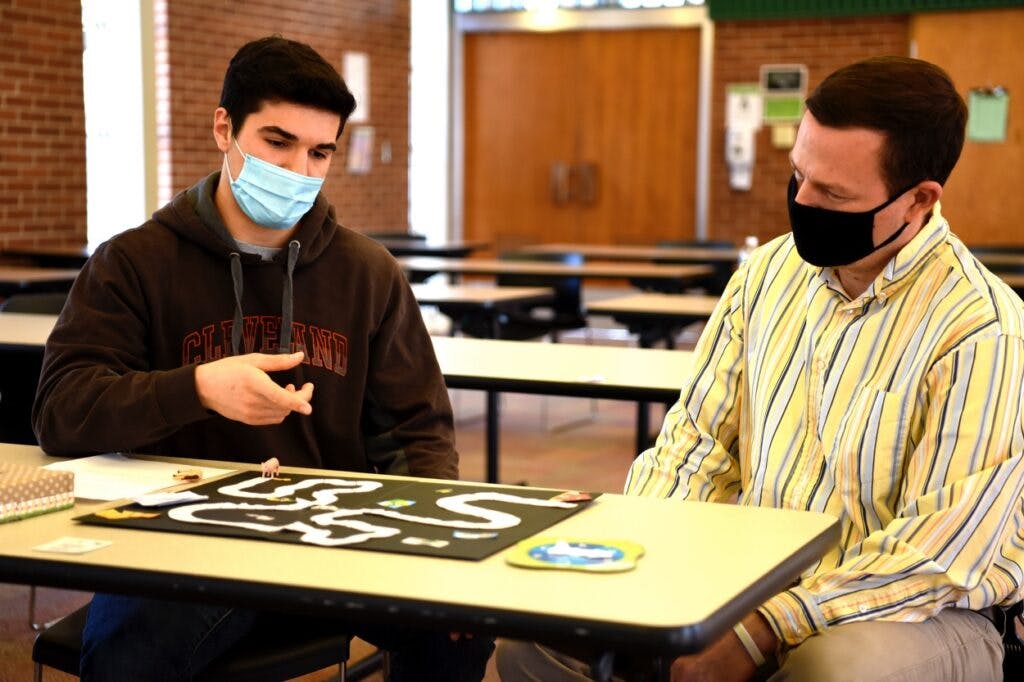Six Teams Compete with Who's the Fool? Game Voted Class Favorite
"Live Life Like Someone Left the Gate Open" is the tagline designed to attract audiences to a board game, Animal Extravaganza, created by four students in Dr. Tim Burgoyne's Entrepreneurship course at Wilmington College.
PICTURED: Senior NIcholas J. Hauser shares insight into his team's board game, Animal Extravaganza, with Dr. Tim Burgoyne. Other team members of Team A+ were Shaiese D. Williams, Hannah S. Sykes and McKenzie R. Riley.
The group was one among six in the class whose charge was to create a game from scratch and devise a plan for marketing it. They determined target markets and likely vehicles for sales of their entrepreneurial ventures, along with distinguishing characteristics and plans for promotion.
“Creating a working board game is a wonderful hands-on-learning opportunity for any entrepreneur," said Burgoyne, assistant professor of business administration. "It allows students a create something fun, yet complicated, in a structured team environment. I hope this is just one of many future creations they take on with others.“
In addition to Animal Extravaganza, the six team's board game creations included: Absolute Zero, Dino Quest, Jail Break, Galaxy Control and — voted class favorite — Who’s the Fool?
Animal Extravaganza's rural-themed product was inspired by team members Hannah Sykes and Makenzie Riley, both of whom grew up on a farm and shared entertaining tales of farm animals. Designed for children six and older, Animal Extravaganza takes no more than 20 minutes to play and, ideally, would be sold at agriculture-related stores like Rural King and Tractor Supply Co.
The group saw its major competition coming from such other rural-flavored games as the popular Catch the Fox and Pop the Pig. "It's not only fun, but also teaches kids to think strategically," they said, noting with a production cost of $5 a game, they would sell it for $15 to $20, with $4 of every sale going toward local 4-H programs.
The assignment was more than conceptual as each team produced a prototype as a complete working model with packaging and game pieces.

Game On! Business Students Create Board Games as Entrepreneurial Venture
Business Administration